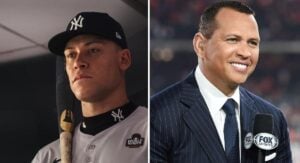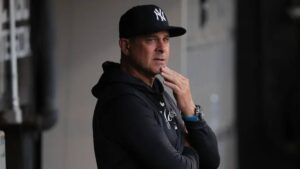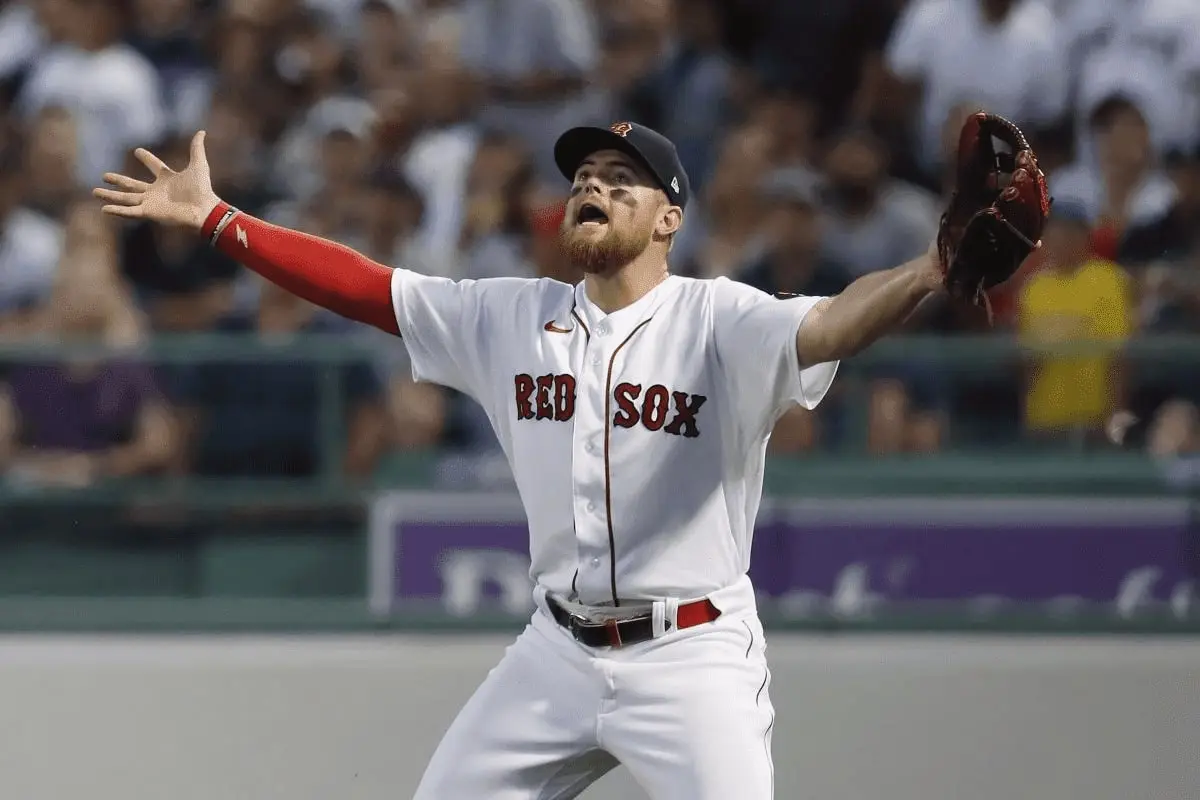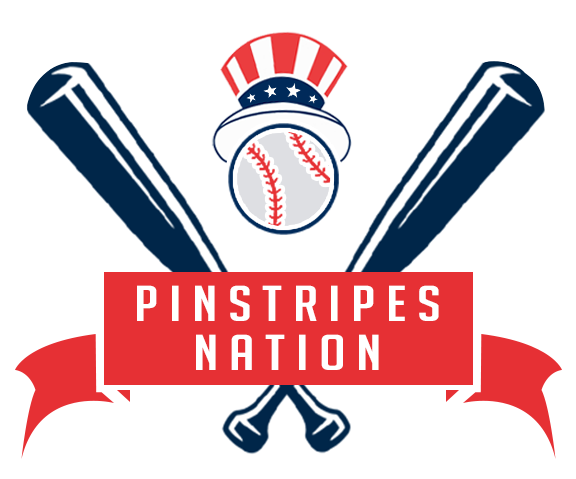Top 5 left fielders in New York Yankees history
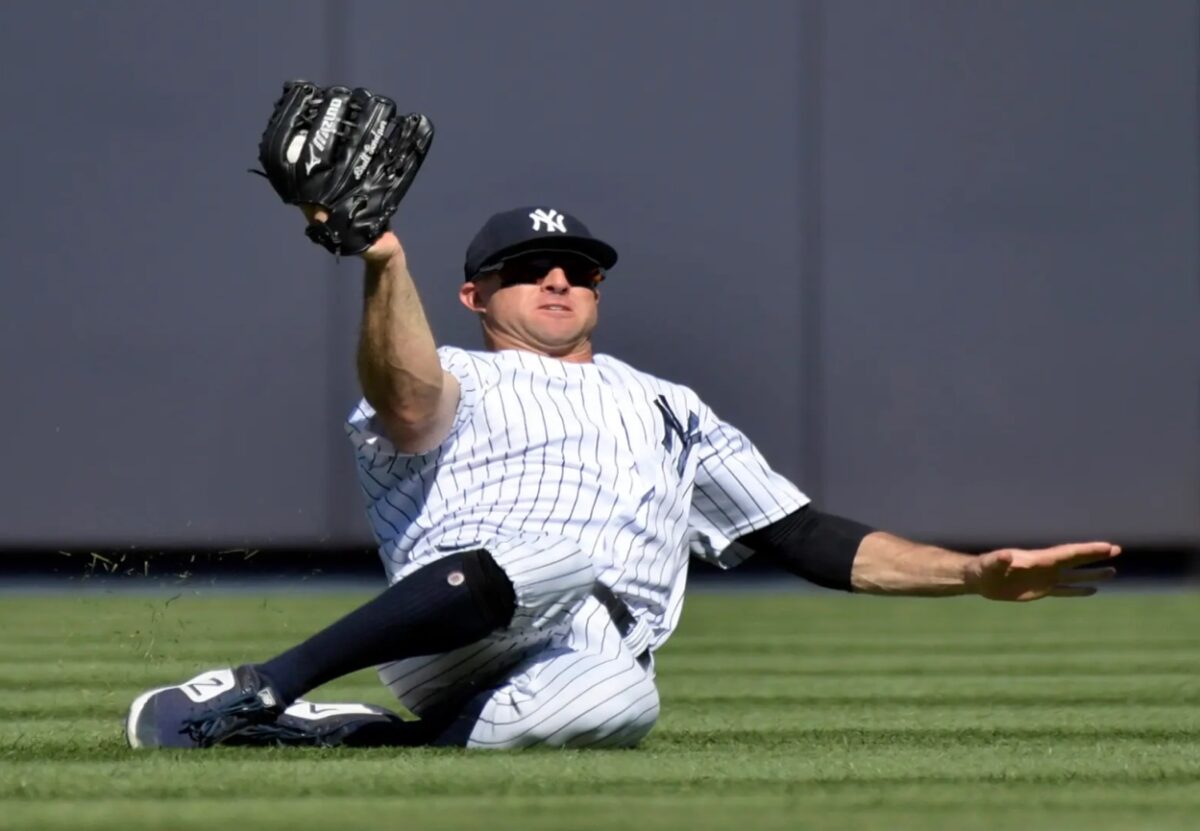

Joe Najarian
More Stories By Joe Najarian
- Mother’s Day: How Anthony Volpe’s mom molded him into a Yankee phenom
- Michael Kay’s show heading to December ending amid uncertainty over ESPN deal
- Yankees’ Gleyber Torres projected to sign with NL West contender
- Yankees keeping tabs on Santander while Soto decision looms, says insider
- Hal Steinbrenner calls Juan Soto talks ‘good’ as Yankees weigh free agency moves
Table of Contents
Who are the best left fielders the New York Yankees have ever had?
Left field is oddly overshadowed by center and right fields, with even the best left fielders in baseball history frequently seeing time at other outfield positions. This also happens to be true for the Yankees, especially in recent years.
Until the Bronx Bombers traded for Alex Verdugo this offseason, the position was such a revolving door that the team even used natural infielders (such as Isiah Kiner-Falefa and Jake Bauers) to man the position. This movement, while most noteworthy today, has actually been frequent throughout the Yankees’ history, with Babe Ruth himself flip-flopping between the corner outfield spots with another great outfielder. Even Yogi Berra, the best catcher in franchise history, learned to play the position so Elston Howard could succeed him behind the plate.
As such, because there are so many possible options, this list will focus on players who played more games in left field than at any other position. Due to this criteria, this top 5 won’t contain all-time greats, but will boast fan favorites and underrated players that deserve recognition.
Here is the list of five of those finest Yankees.
#5. Bob Meusel (1920-1929)

Before Lou Gehrig formed that legendary one-two punch with Babe Ruth, the other half of the “Dynamic Duo” was Bob Meusel, who narrowly qualifies for this list with 625 games in left field against 536 games in right.
With the beginning of his career directly coinciding with the Bambino’s arrival to the Yankees and the start of the live-ball era, Meusel left a great first impression by hitting .328/.359/.517 with a 126 wRC+ and 3.6 fWAR as a rookie. His 40 doubles, 11 home runs, and 83 RBI also made him a key contributor right away as the Yankees ascended into contention.
1921 was even better and set the tone for Meusel’s career; accumulating a career-best 4.4 fWAR, the 24-year-old hit .318/.356/.559 with 40 doubles, 16 triples, 24 home runs, 136 RBI, 104 runs scored, 124 wRC+, and 17 stolen bases for good measure. The Yankees won their first-ever American League pennant that year and made their first of three straight World Series appearances thanks to Meusel’s efforts. He would play in six World Series, winning three of them.
Although Meusel was a solid defender with a strong throwing arm, allowing him to record 149 outfield assists, he is best known for being one of the best hitters of the 1920s. He recorded 1,009 RBI during the decade – all in a Yankee uniform – which is the fourth-most of any player during the decade behind only three Hall of Famers: Harry Heilmann (1,131), Rogers Hornsby (1,153), and Babe Ruth himself (1,338). In addition to hitting 146 home runs as a Yankee, Meusel was an extra-base hit machine with 338 doubles and 87 triples; he hit 40 or more doubles in five different seasons and hit at least 10 triples every year from 1921 to 1925. In 1925, he led the American League with 33 home runs and 134 RBI, and was a key component to the “Murderer’s Row” lineup of 1927 by hitting a career-high 47 doubles. To top everything off, Meusel was a stolen base threat, swiping 133 bags in pinstripes, with a career-high of 26 in 1924.
Overall, Meusel spent all but his last season (1930, with the Cincinnati Reds) with the Yankees and was a complete hitter in nearly every facet, hitting .311/.358/.500 with a .389 wOBA, a 118 wRC+, and 28.3 fWAR. Although he may be overshadowed by Ruth and eventually by Gehrig, it’s impossible to tell the story of the Yankees without Meusel, as he was one of the first cornerstones they had when they evolved into the “Bronx Bombers” that fans know today.
#4. Brett Gardner (2008-2021)
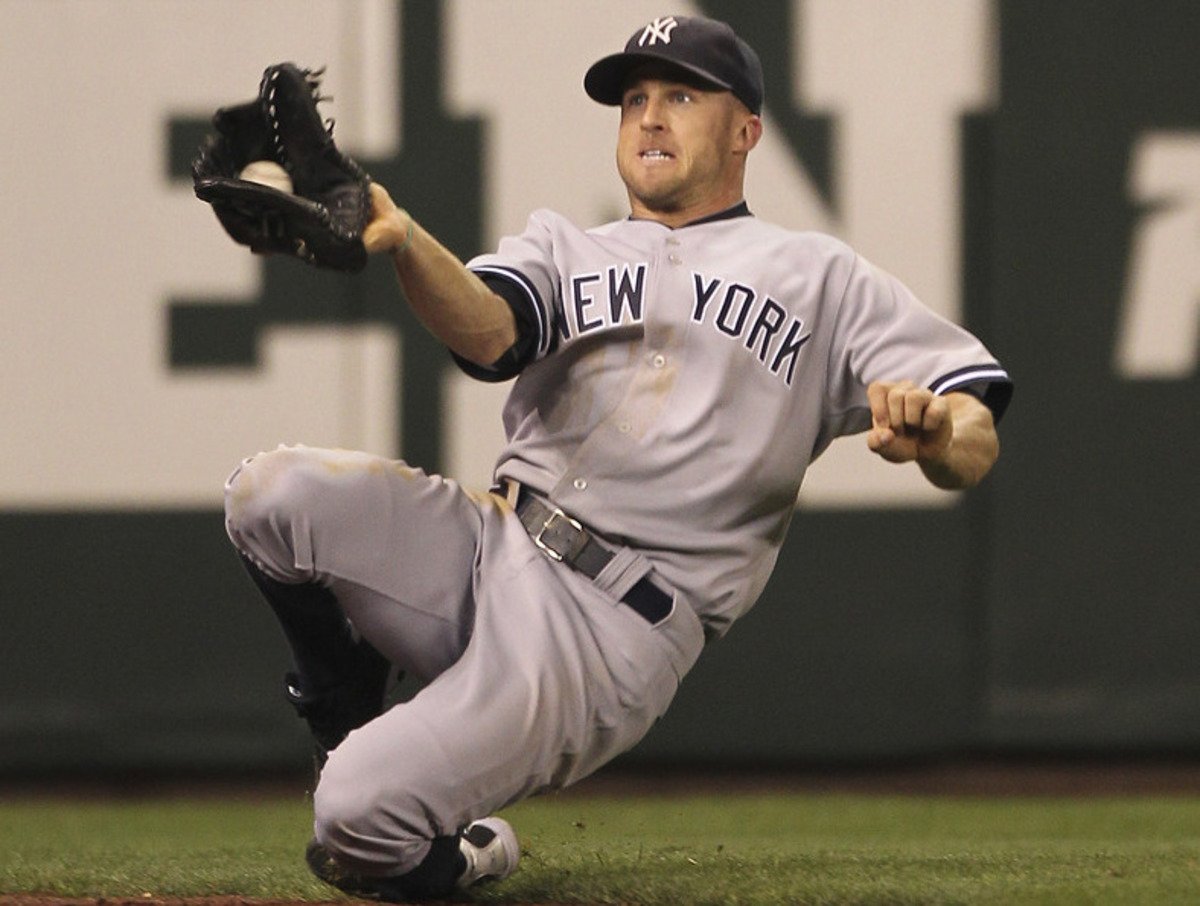
Brett Gardner may not have played a major league game since 2021, but he hasn’t officially retired from the game yet. But if his career is over, then he can call himself a career Yankee who put his heart and soul into every game he played.
After playing 42 games in 2008 and 108 games in 2009, winning a World Series ring in the latter, Gardner became the team’s starting left fielder in 2010 and blossomed into a star. With a combination of elite plate discipline, speed, and defense, he hit .277/.383/.379 with a 112 wRC+, 97 runs scored, and 47 stolen bases, all while recording 25 defensive runs saved in left field. His 6.1 fWAR that year would be a career-best, but Gardner’s skills continued to evolve as his career progressed.
2011 was similar to his breakout season, as Gardner led the American League with 49 stolen bases while continuing to play stellar defense (23 DRS), posting 5.0 fWAR in the process. But after an injury-shortened 2012 season, Gardner steadily began to hit for more power; in 2013, he hit 33 doubles and 10 triples, and in 2014, he shattered his career-high for home runs by hitting 17, after hitting no more than eight in his first six seasons.
As Gardner’s hitting approach changed from speed-based to power-based, he earned his first and only All-Star nod in 2015 while winning a Gold Glove in 2016; his 10 DRS in his Gold Glove winning-season was the most he had since 2011. But even with his valuable play over the past four years, he’d reach new heights in 2017.
In his age-33 season, Gardner wowed the fans by hitting 21 home runs as the primary leadoff hitter, and his 96 runs scored were the most he had in a season since 2010. His evolution into a complete all-around player was marked with a .264/.350/.428 slash line, 63 RBI, 23 stolen bases, a 110 wRC+, 18 defensive runs saved, and 3.8 fWAR. The Yankees would also make an unexpected run to the ALCS, and Gardner was a crucial piece by doing a little bit of everything.
Finally, 2019 saw Gardner fully embrace the homer-happy atmosphere across the league and hit 28 homers at age 35; given his previous player profile, 28 homers was absolutely unthinkable, especially given his age. He additionally recorded a career-best 74 RBI and .503 slugging percentage, his 115 wRC+ was his best in a full season, and he logged 3.4 fWAR in a stunning renaissance that helped extend his Yankee tenure for two more seasons.
In 14 seasons, all in a Yankee uniform, Gardner was productive in every area of the game. He hit .256/.342/.398 with 251 doubles, 73 triples, 139 home runs, 943 runs scored, 274 stolen bases, and 99 defensive runs saved in left field, a 103 wRC+, and 37.2 fWAR. Combined with his productivity was a warrior’s mentality that made him emerge into a true team leader (he may have influenced Aaron Judge’s leadership skills) and a beloved figure throughout the entire Yankee fanbase.
#3. Hideki Matsui (2003-2009)
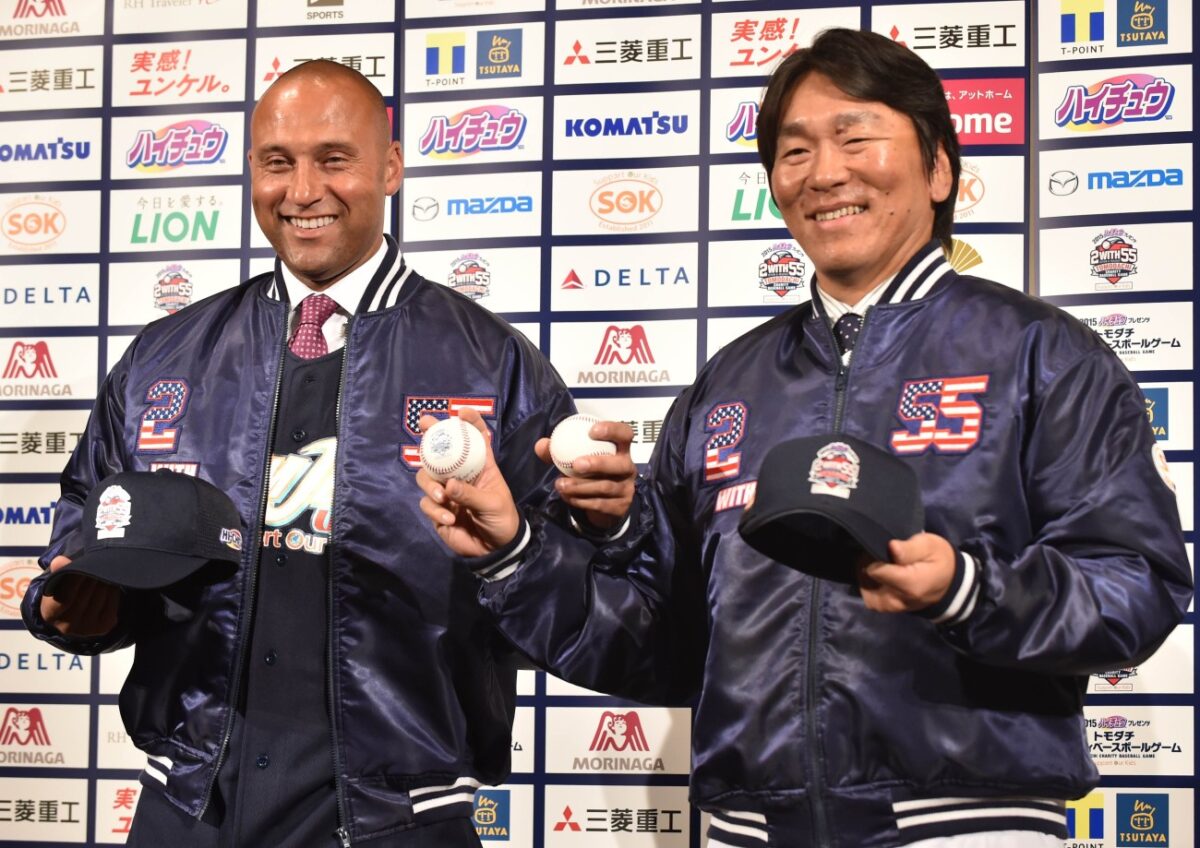
One of the greatest Japanese players of all time, Hideki Matsui conquered the major leagues and became one of the most iconic Yankees of the 21st century.
Before becoming a Yankee, Matsui spent ten seasons with the Yomiuri Giants (who ironically are regarded as the “Yankees of Japan”) and established himself as a tremendous slugger. He won three Central League MVP awards, won four Japan Series championships, and hit .304/.413/.583 with 332 home runs and 889 RBI. His 2002 season was one of the greatest seasons in Nippon Professional Baseball (NPB) history, as he hit a monstrous .334/.461/.692 with 50 home runs in 140 games; further complimenting Matsui’s hitting prowess was his durability, as he played in 1,250 consecutive games with the Giants.
However, with great Japanese players such as Hideo Nomo and Ichiro Suzuki finding success overseas, Matsui decided to take that same leap of faith; he turned down a six-year, $64 million contract from the Giants back in 2001 and instead signed a three-year, $21 million contract in December 2002 to become a New York Yankee. Although he had new competition to face, “Godzilla” immediately thrived in MLB and permanently cemented his legendary status in Japan.
In Matsui’s rookie season, he fit perfectly in an already loaded Yankees lineup and hit .287/.353/.435 with 42 doubles, 16 home runs, 106 RBI, and a 109 wRC+. Despite infamously being snubbed for the AL Rookie of the Year award (which went to Angel Berroa), his contributions were essential to the Bronx Bombers’ pennant-winning 2003 campaign; in the World Series against the Marlins, Matsui went yard in Game 2 to become the first Japanese player to hit a home run in a Fall Classic.
Matsui followed up his impressive first season with an even stronger sophomore effort that ultimately was his best in MLB; having fully adjusted to his surroundings, he scorched major league pitching to the tune of .298/.390/.522 with 34 doubles, 31 home runs, 108 RBI, 109 runs scored, a 140 wRC+, and 3.0 fWAR, the latter two being career-bests. In both of his first two seasons, he was named to the AL All-Star team. Even more impressively, Matsui played every game in each of his first three MLB seasons, running his consecutive games streak to 1,768 across both Japan and North America before fracturing his left wrist on May 11, 2006; despite being a freak accident, he apologized to his teammates for not being available to play, a moment that personified his team-first attitude and tremendous work ethic.
Of course, it’s impossible to talk about Matsui’s time with the Yankees without mentioning his legendary performance in the 2009 World Series. Facing a loaded Philadelphia Phillies pitching staff that included Cliff Lee, Cole Hamels, and Yankee nemesis Pedro Martinez, Matsui hit .615 in the Fall Classic with three homers and eight RBI. After hitting a game-winning home run off Martinez in Game 2 and adding a pinch-hit homer in Game 3, Godzilla entered the pantheon of Yankee postseason heroes with a legendary Game 6 performance; he drove in six runs, tying the record for most RBI in a single World Series game, with a two-run homer, a two-run single, and a two-run double as the Bronx Bombers won 7-3 to clinch their 27th title. Matsui, playing what was his final game in pinstripes, was named World Series MVP.
Over his seven seasons in the Bronx as both a left fielder and designated hitter, Matsui hit .292/.370/.482 with 196 doubles, 140 home runs, 597 RBI, 536 runs scored, a 124 wRC+, and 12.6 fWAR; he would play three more major league seasons with the Angels, Athletics, and Rays before retiring, becoming the first player ever to play at least 10 seasons in both NPB and MLB. A great player and teammate, Matsui helped introduce the Yankees to a brand new audience and, along with Nomo and Ichiro, helped blaze a trail for many more great Japanese players to showcase their talents to Major League Baseball.
#2. Roy White (1965-1979)

In between the end of the great Yankee dynasty and the beginning of the infamous “Bronx Zoo” era, there was one constant on the Yankees: Roy White.
A switch-hitting, hustling left fielder who gave the Yankees everything he had, White spent his entire 15-year career in pinstripes and was remarkably consistent on both sides of the ball. He compiled a .271/.360/.404 lifetime slash line with 1,803 hits, 300 doubles, 160 home runs, 233 stolen bases, 758 RBI, 964 runs scored, and a 123 wRC+. Defensively, he was worth 54 total zone runs and had a .987 fielding percentage.
After playing 199 games from 1965 to 1967, White enjoyed his breakout season in 1968, his age-24 season. Although 1968 was famously known as “The Year of the Pitcher”, he was one of the league’s most productive hitters by posting a 137 wRC+, hitting .267/.350/.414 with 20 doubles, seven triples, 17 home runs, 20 stolen bases, and 89 runs scored. Showing excellent plate discipline, White walked in 11.1% of his plate appearances with just a 7.6% strikeout rate in a year where offense was sparse across the league.
Even though White would be renowned for his consistency, he still enjoyed an excellent five-year peak, beginning in the aforementioned 1968 season and ending in 1972. Over those five seasons, he played in 753 of a possible 810 games and hit a collective .283/.380/.432 with 131 doubles, 25 triples, 75 home runs, 99 stolen bases, 368 RBI, 415 runs scored, and a 138 wRC+; defensively, he was worth 40 total zone runs with 41 outfield assists and a .995 fielding percentage, including going the entire 1971 season without an error. He also drew 434 walks while submitting just 292 strikeouts. Ultimately, White compiled 24.6 fWAR during this five-year prime.
Once this prime ended, White remained a quiet but important contributor to the Yankees. From 1968 to 1978, he had a wRC+ above league average (100) every year, stole at least 10 bases each season, and walked more than he struck out in all but one season (1973). Over this span, he had a .355 wOBA.
White had the unfortunate timing of starting his career when the Yankees were rapidly declining and all their old legends were retiring. But after 12 seasons, he finally made the playoffs in 1976 and got to play in the World Series for three consecutive years. White made the most of those playoff runs, hitting .278/.387/.430 with 20 runs scored and a 139 wRC+ in 25 postseason games; his efforts were rewarded with consecutive World Series rings in 1977 and 1978.
In the end, White accumulated 41.0 fWAR as a Yankee, the second-highest by all left fielders in franchise history. As one of the franchise’s most underrated players, declaring White as the second best left fielder in Yankees history should hopefully do his excellent career justice.
#1. Charlie Keller (1939-1949, 1952)
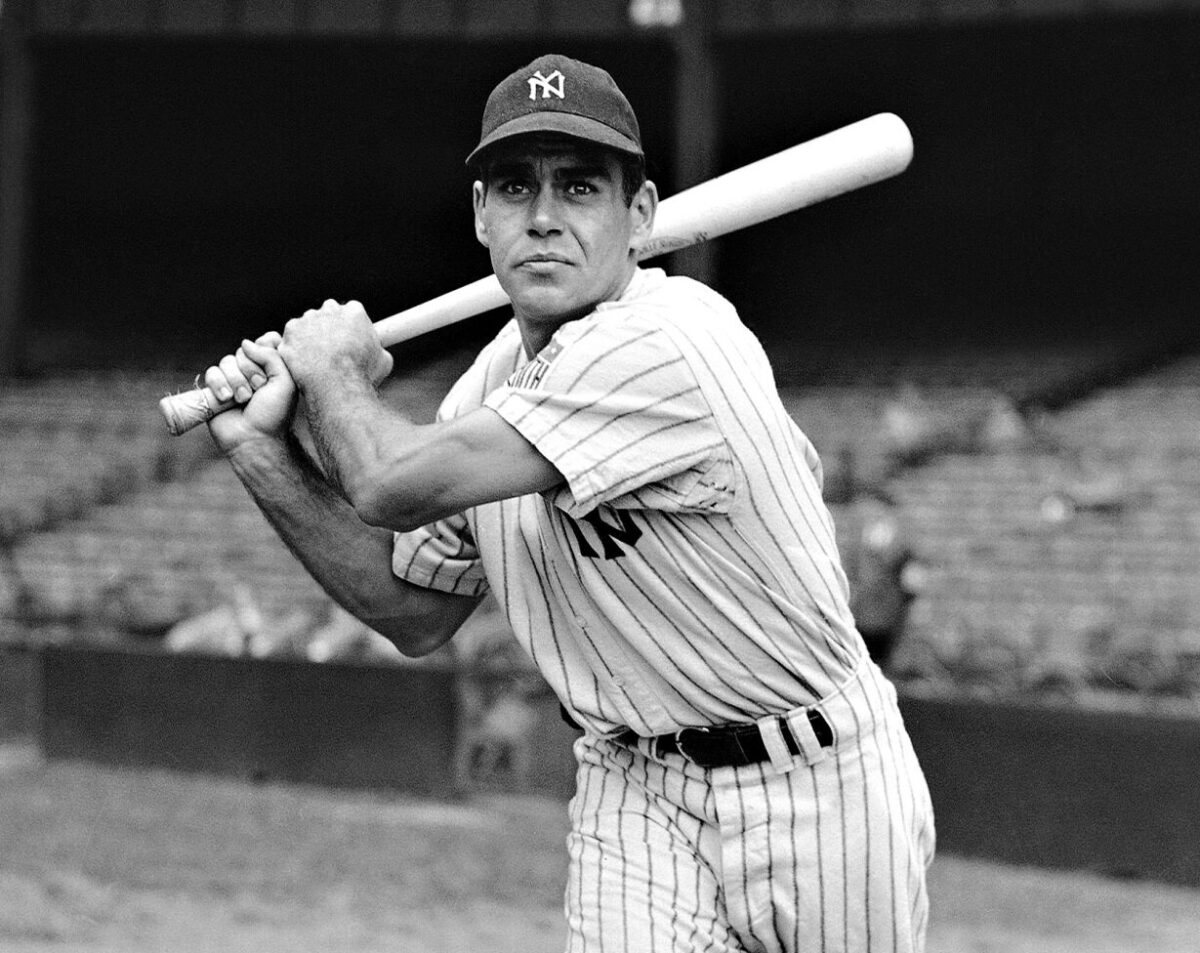
Despite having an injury-shortened career, Charlie Keller was the best left fielder in Yankees history and was a Hall of Fame-caliber player at his peak.
A multi-sport star at the University of Maryland, Keller played baseball, football, and basketball as a freshman before deciding that baseball was his true calling; he dominated for the Terrapins before the Yankees quickly offered him a contract. Keller then spent the 1937 and 1938 seasons with the Newark Bears, the Yankees’ top minor league team, and was the Minor League Player of the Year in the former season, headlining one of the greatest minor league teams of all time. Finally, in 1939, legendary Yankee manager Joe McCarthy personally invited the 22-year-old to spring training, believing he could become the team’s starting left fielder; Keller went on to make the Opening Day roster.
In his 111-game rookie season with the Bronx Bombers, Keller demonstrated fantastic plate patience and prodigious power, to the point where he was nicknamed “King Kong” due to his strength. He hit .334/.447/.500 with 21 doubles, 11 home runs, and 83 RBI; although he was just 22 years old, pitchers were immediately terrified of Keller and walked him in 16.5% of his plate appearances. Overall, he recorded a 144 wRC+ and 4.9 fWAR to help transform the 1939 Yankees into an unstoppable force.
Keller improved even further in 1940 and played in 138 games; although his batting average fell to .286, he still logged a .919 OPS and a 138 wRC+ with 18 doubles, 15 triples, 21 home runs, 93 RBI, and 102 runs scored. Fearful pitchers walked Keller in 17.4% of his plate appearances.
Even after a pair of great seasons to begin his career, Keller would officially enter his prime in 1941. Over the next three seasons, King Kong hit .287/.410/.539 with 90 homers, 63 doubles, 30 triples, 316 RBI, 305 runs scored, a 17% walk rate against a 9.8% strikeout rate, a .439 wOBA, a 160 wRC+, and 21.5 fWAR. Defensively, Keller was also reliable with a combined 17 total zone runs and 25 outfield assists. He wasn’t just Joe DiMaggio’s teammate, he was one of the best players in baseball.
Further helping Keller’s case was his brilliant World Series numbers; in four Fall Classics and 19 games, he hit .306 with a .611 slugging percentage and a 154 wRC+. Of his 22 hits, 10 of them went for extra bases (including five home runs), and he drove in 18 runs while crossing home plate as many times. Out of all his World Series performances, 1939 was his best as he went yard three times (twice in Game 3), drove in six runs while scoring eight times, and hit .438 with a 1.188 slugging percentage and a 289 wRC+ in a four-game sweep of the Reds. His biggest hit came in the bottom of the ninth inning of Game 1; with the score tied at one, Keller lashed a triple and subsequently scored the winning run on Bill Dickey’s walk-off single. Had the award existed at the time, Keller undoubtedly would have been World Series MVP.
Sadly, Keller’s career would be cut short by a back injury. After serving in World War II for all of 1944 and most of 1945, he enjoyed another strong season in 1946 by hitting .275/.405/.533 with 30 home runs, 101 RBI, a 157 wRC+, and 6.5 fWAR. But after a strong start in 1947, he was lost for the season due to a herniated disc in his back. For the rest of his career, Keller would never play in more than 83 games in a season despite still being productive at the plate; he eventually left the Yankees after the 1949 season to serve as a pinch-hitter for the Detroit Tigers. After two years in Detroit, Keller rejoined the Yankees in September 1952 and played in just two games before calling it a career; the Yankees showed their appreciation by giving him a World Series share after their Fall Classic victory that year.
In 10 seasons and 1,064 games with the Bronx Bombers (excluding his two-game cameo in 1952), Keller was nothing short of phenomenal. At the plate, he hit .286/.410/.518 with 163 doubles, 69 triples, 184 home runs, 723 RBI, 712 runs scored, a .429 wOBA, and a 151 wRC+. He registered a fantastic 17% walk rate across his Yankee tenure while striking out in only 10.8% of his at-bats. Defensively, Keller was solid with 37 total zone runs, 46 outfield assists, and a .980 fielding percentage. His home run total, OPS, and 44.6 fWAR are all the highest among left fielders in team history; 41.1 of that fWAR total came in just seven seasons.
If Keller enjoyed a healthy career while maintaining his level of play, he would almost certainly be in the Baseball Hall of Fame; his 151 wRC+ for his career is higher than numerous Hall of Famers such as Jeff Bagwell, Edgar Martinez, Mike Schmidt, Ralph Kiner, Willie McCovey, and Jim Thome. In fact, Keller’s mark is tied with his legendary teammate, Joe DiMaggio, for the 27th best in major league history. Keller accomplished more in 10 years than many all-time greats did in 20 years.
Charlie Keller is one of many Yankee stars who are overlooked due to the legends they played with, but perhaps naming him the greatest left fielder in franchise history can help give him the recognition he deserves.
Honorable Yankees mentions:
Birdie Cree– One of the franchise’s earliest stars dating back to the Highlanders days, Cree spent his entire eight-year career with the Yankees and compiled a 123 wRC+ and 14.9 fWAR. Despite hitting only 11 career homers, he still logged a .370 wOBA by socking 117 doubles and 62 triples. 30 of those doubles and 22 of those triples came in an exceptional 1911 campaign when Cree slashed a tremendous .348/.415/.513 with a .436 wOBA, a 148 wRC+, and 5.7 fWAR in the midst of the dead-ball era.
Lou Piniella– Before becoming one of the game’s most iconic managers, “Sweet Lou” Piniella spent 11 years as a fan favorite during the tumultuous “Bronx Zoo” era. Breathing fire into the Bronx Bomber clubhouse, Piniella hit .295/.338/.413 with 178 doubles, 57 home runs, a 109 wRC+, and 8.5 fWAR. His finest moment in pinstripes came in Game 4 of the 1978 World Series, hitting a walk-off single that tied the series at two games apiece before the Yankees won in six games. He later served two separate stints as manager from 1986 to 1988, a sign of things to come.
Gene Woodling– A star of the Casey Stengel era, Woodling spent just six seasons with the Bronx Bombers but was part of five consecutive World Series winning teams and registered 15.7 fWAR. An exceptionally disciplined hitter, he had a 14.1% walk rate with a minuscule 6.9% strikeout rate and logged a .388 on-base percentage with a 126 wRC+. Woodling was also tremendous in his plethora of World Series action, with a .318/.442/.529 slash line, 21 runs scored, and a 161 wRC+ in 26 Fall Classic games.
Who do you think is the best Yankees left fielder? Leave your comment below.

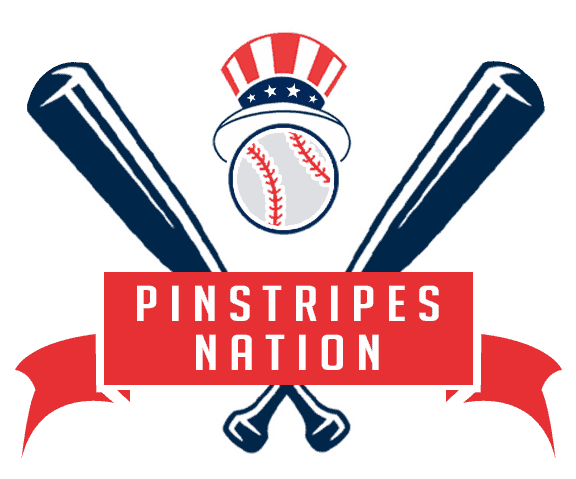
 Follow Us
Follow Us

